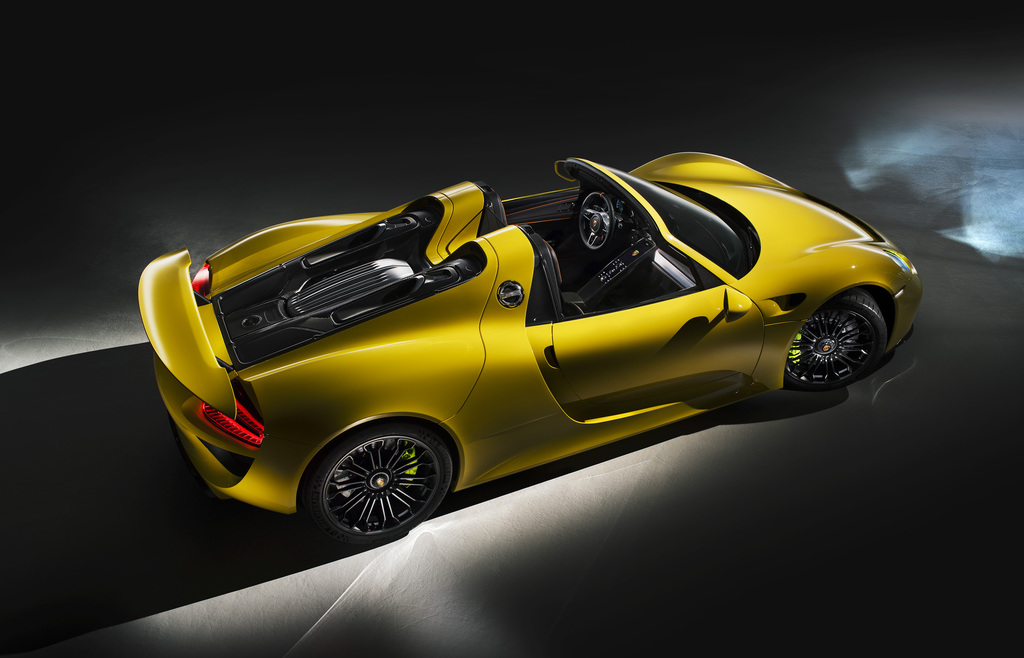Porsche 918 Spyder – Technical Specifications
The main driver of the Porsche 918s staggering performance is that powertrain. First up is the 4.6-litre, eight-cylinder engine with an output of up to 608 bhp. Based on the power unit of the successful RS Spyder endurance race car, the engine delivers engine speeds of up to 9150 rpm and a power output per litre of approx. 132 bhp/litre – 26 bhp/litre more than that of the Carrera GT, making this the highest specific power of any naturally aspirated Porsche engine.
The V8 engine is coupled to the hybrid module as the 918 Spyder is designed as a parallel hybrid like Porsche’s current hybrid models. The hybrid module essentially comprises a 115-kW electric motor and a decoupler that serves as the connection with the combustion engine. Because of its parallel hybrid configuration, the 918 Spyder can be powered at the rear axle either individually by the combustion engine or the electric motor, or via both drives together. As is typical for a Porsche super sportscar, the power unit assembly in the 918 Spyder has been placed in front of the rear axle, and it does not have a direct mechanical connection to the front axle. A seven-speed Porsche Doppelkupplung (PDK) transmission handles power transmission to the rear axle.
No Subscription? You’re missing out
Get immediate ad-free access to all our premium content.
Get Started



